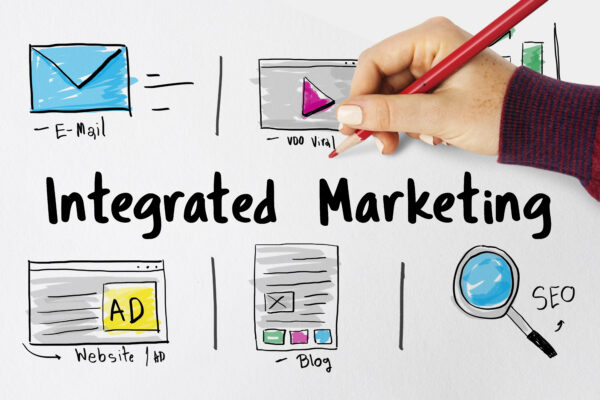
Integrated marketing is hardly a new concept. Brands of all types have leveraged the power of consistency and continuity to communicate across channels: print and digital ads, website, social media platforms, email and direct mail, broadcast, out-of-home, PR, events … the whole marketing toolkit, all working together.
In the healthcare field, integrated marketing is especially important because both nonprofit health organizations and large medical networks need to build trust in their audience. If a healthcare brand communicates in a haphazard way, using different tones of voice or photographic styles, or different visual elements like typefaces and colors, then consumers get confused. “Who is this organization, really? Do they have their act together? Can I trust them to fix my knee or manage my illness or help my family member get the mental health care they need?”
On the other hand, consistency and cohesion in your marketing campaigns breeds familiarity. “Ahh, I’ve seen this hospital’s billboards and mailers and outreach in the community. I’ve seen the T-shirts and social media photos from this nonprofit’s 5K fundraiser. I know them and have confidence in them.”

For healthcare marketing teams that are under-resourced and over-worked (which is pretty much every team we know), working in an integrated fashion can be challenging. You’re faced with managing lots of marketing priorities, some of them conflicting. Projects drop on your desk and you have to complete them quickly, which can lead to a one-off approach. And you probably have a lot of legacy communication pieces out there — think: old brochures in doctors’ offices, staff T-shirts with an outdated logo, an email template that’s not up to date — simply because it’s hard to get a handle on all the touchpoints where the brand appears.
In addition, large and small organizations can fall into silo mode, where different business units or teams communicate in different ways. For example, a nonprofit’s outreach to funders doesn’t sync with messaging to community, or marketing and HR are using different voices to reach patients and employees.
We always advocate for our clients to take an integrated approach to marketing their healthcare brands. Integrated marketing allows organizations to reach their customers on a larger scale, wherever they are — in the car, online, reading the newspaper, etc. It also improves the effectiveness of your campaigns because more impressions cross multiple channels keeps your brand top of mind. And over time, the model becomes more cost-effective, because you can repurpose so many of your brand assets in multiple ways.

Think of integrated marketing like a trail of breadcrumbs; you’re reaching audience with bits of information wherever they are, and all of those bits add up to a unified message.
We’ve found that a major awareness campaign (such as when your organization rebrands, launches a major new initiative, or takes a fresh strategic direction), can be an on-ramp to a fully integrated marketing system. This kind of high-profile campaign will naturally leverage a whole range of channels and communication vehicles, so it sets the stage for unified messaging.
What can your team do to implement this approach? Here are some steps to take:
With an integrated approach to marketing your healthcare organization, every project you do is part of a larger, cohesive whole. Messaging builds on and reinforces itself. And getting your work done is easier because you’re not constantly starting from scratch; there’s a system in place. Integrated marketing is our strong suit, so if this is something your team struggles with, give us a call.
Tenth Crow Creative is a brand marketing agency that creates, aligns, and promotes messaging for health and wellness organizations. Through insightful branding, engaging design and compelling marketing campaigns, we help these essential organizations find their identities and effectively communicate with their stakeholders so they can fulfill their missions.
Posted By
Tenth Crow Creative
Categories
Branding, Content Marketing, Healthcare Marketing
Tags
#healthcarebranding, #healthcaremarketing